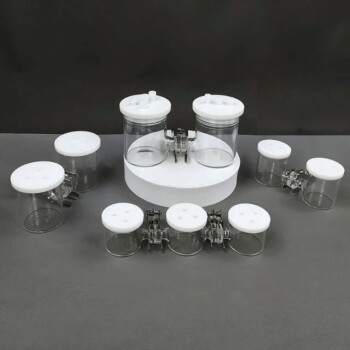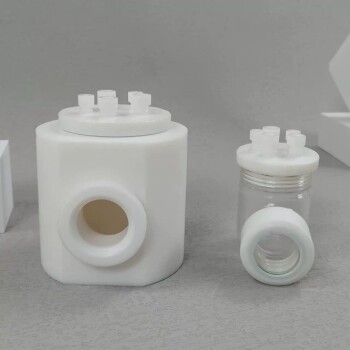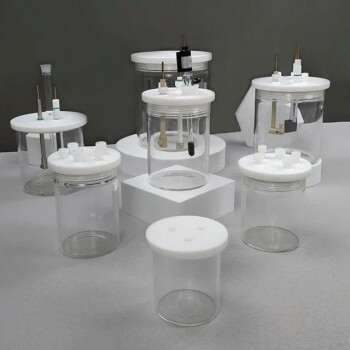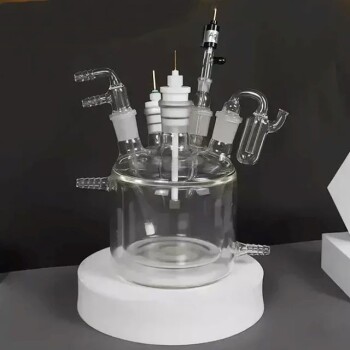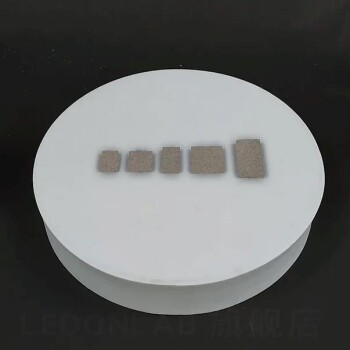We offer a convenient one-stop procurement service for electrochemical instruments and consumables. All you need to do is provide us with a list of the consumables you require, and we'll take care of the rest.
Our products are resistant to acids and alkalis, and made from high-quality materials that are both safe and durable. You can trust our products to meet your needs and provide reliable performance.
Toggle Categories
Get Instant Support
Choose your preferred way to connect with our team
-
Get Free Quote Fill out form for detailed pricing
-
Send Email Detailed inquiry support
-
WhatsApp Quick mobile chat
Response Time
Within 8 hours on working days, 24 hours on holidays
Electrochemical Consumables
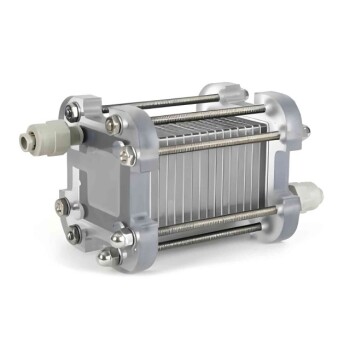
Customizable Fuel Cell Stack Components for Diverse Applications
Item Number : FCS

FS Electrochemical Hydrogen Fuel Cells for Diverse Applications
Item Number : FSE

Multifunctional Electrolytic Electrochemical Cell Water Bath Single Layer Double Layer
Item Number : ELCM
$159.00

H-Type Double-Layer Optical Electrolytic Electrochemical Cell with Water Bath
Item Number : ELCHD
$269.00

Electrolytic Electrochemical Cell Gas Diffusion Liquid Flow Reaction Cell
Item Number : ELCG

PTFE Electrolytic Cell Electrochemical Cell Corrosion-Resistant Sealed and Non-Sealed
Item Number : ELCP
$29.90
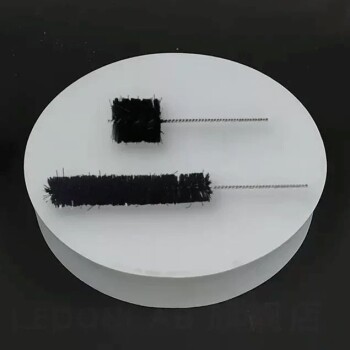
Conductive Carbon Fiber Brush for Static Removal and Cleaning
Item Number : ELBCF

Conductive Carbon Cloth Carbon Paper Carbon Felt for Electrodes and Batteries
Item Number : ELCPF
$19.90
An electrolytic cell is an electrochemical cell that requires an external source of electrical energy to drive a chemical reaction that would not occur spontaneously. The cell consists of two electrodes, an anode (positive) and a cathode (negative), that are immersed in an electrolyte solution. By applying a voltage between the two electrodes, a chemical reaction is forced to occur.
This is different from a galvanic cell, which generates electrical energy and is the basis of a battery. In a galvanic cell, the overall reaction is spontaneous, meaning the Gibbs free energy remains negative. In contrast, the overall reaction in an electrolytic cell is the reverse of the spontaneous reaction, resulting in a positive Gibbs free energy.
Electrolytic cells are commonly used in various industrial and laboratory applications, such as electroplating, electrolysis, and the production of certain chemicals. They play a crucial role in many fields, including metallurgy, medicine, and energy storage. By controlling the applied voltage and the properties of the electrolyte solution, it is possible to tailor the reactions to produce desired products with high efficiency and precision.
Applications
Electrolytic cells use electrolysis to decompose chemical compounds, such as water and bauxite, into their constituent elements through the application of a direct electric current. Electroplating of metals like copper, silver, nickel, and chromium also uses electrolytic cells.
Electrolytic cells play a critical role in the commercial production of high-purity non-ferrous metals like aluminum, copper, zinc, and lead through the electrorefining and electrowinning processes.
KinTek Electrochemical Consumables
Our electrochemical consumables are a top choice for researchers and professionals alike. With a long production history, a wide range of products, and the ability to customize, our products is the perfect solution for all your electrochemical needs.
FAQ
What Are Optical Windows And What Are They Used For?
What Considerations Should Be Made For Battery Case Gaskets?
What Is The H Type Of Electrochemical Cell?
What Is The Function Of Auxiliary Electrode?
What Are The Materials Used In Electrochemical Cell?
What Are Electrolytic Cells Used For?
What Are The Different Types Of Optical Windows Available?
What Is An Electrode In Electrochemistry?
What Is Reference Electrode With An Example?
What Is Rotating Disk Electrode Used For?
What Is The Role Of Battery Case Gaskets?
What Is H-cell Used For?
What Is The Difference Between Auxiliary And Reference Electrode?
What Are The Examples Of Electrochemical Material?
What Is The Difference Between Galvanic Cell And Electrolytic Cell?
How Do Optical Windows Work?
What Are The 3 Electrodes In Electrochemistry?
What Is The Role Of Reference Electrode?
What Is The Rotating Electrode Method?
What Are Lithium-air Battery Cases?
What Is The H Type Microbial Fuel Cell?
What Materials Are Commonly Used For Auxiliary Electrodes?
What Is An Electrolytic Cell And How Does It Work?
What Are The Advantages Of Using Optical Windows In High-power IR Laser Applications?
What Are The Different Types Of Electrochemical Electrodes?
What Is Reference Electrode Used For?
What Is The Rotating Ring-disk Electrode Method?
How Should Button Battery Cases Be Chosen For Specific Applications?
How Many Types Of Electrolytic Cells Are There?
How Do Auxiliary Electrodes Affect The Performance Of An Electrochemical Cell?
What Are The Two Points Of Difference Between Electrochemical And Electrolytic Cells?
Why Are CaF2 Windows Preferred In Certain Optical Applications?
What Materials Are Commonly Used For Electrochemical Electrodes?
What Is A Reference Electrode Vs Counter Electrode?
What Is The Difference Between Standard And Reference Electrode?
What Are The Advantages Of Rotating Disc Electrode?
What Is The H Cell For Hydrogen Permeation Experiments?
Why Are Auxiliary Electrodes Necessary In Electrochemical Systems?
What Is The Example Of Electrolytic Cell?
What Makes MgF2 Windows Unique?
What Factors Should Be Considered When Selecting An Electrochemical Electrode?
Are There Any Limitations Or Considerations When Using Auxiliary Electrodes?
Are Electrolytic Cells Spontaneous?
How Does Silicon Perform In Near-infrared (NIR) Applications?
How Can Electrochemical Electrodes Be Used In Various Applications?
What Are The Benefits Of Using High-temperature Resistant Optical Quartz Glass Sheets?
Why Are Zinc Sulfide (ZnS) Windows Preferred In Harsh Environments?
What Are The Applications Of Barium Fluoride (BaF2) Windows?
REQUEST A QUOTE
Our professional team will reply to you within one business day. Please feel free to contact us!
Related Articles

The Architecture of Certainty: Mastering Control in Multifunctional Electrolytic Cells
Precision in electrochemistry isn't about guesswork; it's about hardware architecture. Learn how the three-electrode system isolates variables for true control.

The Architecture of Precision: Mastering the Five-Port Water Bath Electrolytic Cell
Mastering the electrolytic cell is not just about chemistry; it is about discipline. Learn the systematic approach to preparation, operation, and maintenance.

The Geometry of Truth: Why the Maintenance of Your Optical Electrolytic Cell Defines Your Data
Great data isn't just about the experiment; it's about the vessel. Learn the rigorous maintenance protocols for side-window optical electrolytic cells.

The Hidden Life of Lab Equipment: Preserving the Integrity of the Electrolytic Cell
Proper storage is an active defense against entropy. Learn the protocols for maintaining electrolytic cells to ensure data fidelity and equipment longevity.

The Quiet Discipline: Mastering the Post-Use Protocol for Five-Port Electrolytic Cells
Learn the methodical post-use care for five-port water bath electrolytic cells. Prevent corrosion, ensure safety, and protect your experimental data.

The Silent Interface: Mastery Over Electrode Decay
Electrode failure is rarely sudden; it is the compound interest of neglect. Learn the disciplined maintenance protocols that preserve accuracy and longevity.

The Architecture of Reaction: Selecting the Right Electrolytic Cell Body
Discover how cell volume and sealing impact electrochemical data. Learn to balance scarcity, scale, and sensitivity with the right lab equipment choices.

The Architecture of Control: Mastering the Super-Sealed Electrolytic Cell
Precision in electrochemistry isn't just about theory; it's about mechanical discipline. Learn the critical protocols for super-sealed electrolytic cells.

The Architecture of Control: Why Thermal Stability Defines Electrochemical Precision
Master electrochemical accuracy by understanding the interplay between three-electrode systems and thermal regulation. Eliminate variables to ensure reproducibility.

The Architecture of Invisible Containment: Why Material Choice Defines Electrochemical Precision
Explore the strategic engineering behind High Borosilicate Glass and PTFE in electrolytic cells—balancing visibility with absolute chemical inertness.

The Symphony of Silence: Molybdenum and the Architecture of the Vacuum Hot Zone
Why do we trust Molybdenum in the most extreme environments? Explore the engineering logic behind all-metal hot zones and the pursuit of absolute purity.

The Thermodynamics of Precision: Mastering the Double-Layer Electrolytic Cell
Precision isn't accidental. Discover the methodical operation of double-layer electrolytic cells, where thermal stability and rigid setup define success.

The Architecture of Purity: Why Electrochemical Experiments Fail
Contamination in electrolytic cells is rarely just "dirt"—it is data corruption. Discover the systemic approach to preserving experimental integrity.

The Silent Variable: Engineering Reliability in Electrolytic Cells
Data accuracy depends on equipment integrity. Learn the engineering protocols for maintaining electrolytic cells to prevent systemic error.

The Quiet Architecture of Clarity: Preserving Side-Window Optical Cells
Learn the precise protocols for storing optical electrolytic cells. Prevent thermal degradation, chemical etching, and data drift with expert maintenance strategies.

The Silence of the Seal: Why Electrochemical Precision is a Battle Against the Atmosphere
Precision in electrochemistry isn't just about voltage; it's about isolation. Discover how super-sealed cells defeat contamination and define reproducibility.

The Silent Partner: Why Material Choice in Electrochemistry is a Matter of Trust
Discover why high borosilicate glass and PTFE are the non-negotiable standards for electrolytic cells. A deep dive into material science for precise data.

Your Induction Furnace Is Failing You. The Reason Isn't What You Think.
Struggling with inconsistent melts or high costs? The problem may be a fundamental mismatch in your induction furnace type. Learn to fix it.

The Architecture of Control: Why Thermal Stability Defines Electrolysis Success
Discover how double-layer water-bath electrolytic cells eliminate thermal variables, ensuring accuracy and reproducibility in electrochemical research.

The Art of the Non-Spontaneous: Precision in Electrolytic Circuits
Mastering the electrolytic cell setup requires more than connecting wires. It demands a systematic approach to polarity, purity, and power control.

